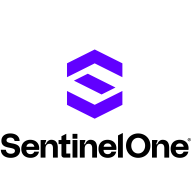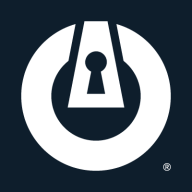

SentinelOne Singularity Complete and ThreatLocker Zero Trust Endpoint Protection actively compete in the cybersecurity category. SentinelOne holds a competitive advantage with its advanced rollback functionality, providing significant protection against ransomware by instantaneously restoring system states, while ThreatLocker focuses on zero trust through granular application control.
Features: SentinelOne Singularity Complete offers a robust rollback capability that swiftly restores systems following a ransomware attack. Its Active EDR technology automatically identifies and mitigates threats using AI. The platform also provides deep visibility features for a comprehensive overview of potential security threats. ThreatLocker emphasizes application control, maintaining zero trust through establishing specific policies to restrict unauthorized software. It includes ring-fencing, which controls application interactions, and provides support for granular policy adjustments to define security perimeters.
Room for Improvement: SentinelOne could enhance the management console usability, improve reporting functionalities, and streamline the agent update process. It might also benefit from a more robust alert system. ThreatLocker could improve the intuitiveness of its user interface and optimize workflow efficiency, specifically around application approval requests, to reduce the learning curve for administrators.
Ease of Deployment and Customer Service: SentinelOne Singularity Complete supports diverse deployment models, including public, private, and hybrid clouds. Users praise its technical support, though more interactive sessions could be beneficial. ThreatLocker supports multiple deployment models and offers strong customer engagement with responsive support, although integration with PSA systems could improve for smoother operations.
Pricing and ROI: SentinelOne Singularity Complete boasts cost-effectiveness with a comprehensive feature set, though advanced capabilities such as Ranger and deep visibility might incur additional costs. ThreatLocker features reasonable pricing within the zero trust domain, delivering significant value notably for MSPs through flexible structures. Both products demonstrate strong ROI, with SentinelOne reducing response times and manpower, while ThreatLocker effectively prevents unauthorized applications and simplifies endpoint security management.
Since then, I have not faced any intrusions, which is one reason I chose SentinelOne over ESET.
We have not faced any attacks since we implemented it.
It has absolutely helped reduce our organizational risk.
If something were to happen without ThreatLocker, the cost would be huge, and thus, having it is definitely worth it.
The main return on investment is peace of mind, knowing that with ThreatLocker on any endpoint, it will almost always block all malicious code or exploits, even zero-day exploits.
It keeps malware, Trojans, and ransomware at bay.
They do a great job of figuring out the problem and pointing you to generic documentation or working with you to fine-tune a solution.
We are using the automated email process for support, and they respond within an hour or two hours sometimes.
A chat service would be beneficial.
They have been very responsive, helpful, and knowledgeable.
I would rate their customer support a ten out of ten.
Their support is world-class.
It's all auto-scale and auto-categorized, configuring automatically.
The tool's built-in automation for deploying the agents works well for large infrastructures like mine.
My deployment is relatively small, and SentinelOne Singularity Complete works within those constraints.
I started off with just the servers, and within a month and a half, I set up the entire company with ThreatLocker.
It seems to primarily operate on the endpoints rather than at a central location pushing out policies.
I would rate it a ten out of ten for scalability.
It has caused problems with interoperability between third-party tools, which could lead to entire servers crashing or specific tools failing.
This indicates room for improvement in stability when interacting with other solutions.
Initially, there were issues, particularly on the management side, but now the console is much more stable.
For five years, we have not had a problem.
Once deployed, it downloads the policies locally, so even if the computer doesn't have internet, it doesn't matter.
It has been very stable, reliable, and accessible.
The only thing that prevented the attack from succeeding was a free version of Malwarebytes.
Providing a single pane of visibility for the end user would be beneficial.
It's challenging to prevent a user from manipulating their privileges or someone else's of others, and it's difficult to control what users can access at the organizational level.
Controlling the cloud environment, not just endpoints, is crucial.
This is problematic when immediate attention is needed.
Comprehensive 24-hour log monitoring is a valuable enhancement for both business and enterprise-level users.
If you want protection, you have to pay the price.
They counted many of the instances and licenses as duplicates despite them only being alive once, which was frustrating.
It’s cheaper than other competitors.
After conversations with other partners, it became clear we underpriced it initially, which caused most of our issues.
We are moving towards the Unified solution, where they basically bundle everything together, providing us better stability with the ability to bring in new product offerings without having to go back to the customer and say, 'This is going to cost you.'
I had a really good deal at the time, and it continues to be cost-effective.
I have an advanced app providing visibility of all my endpoints, which was not the case before.
SentinelOne has a feature to decommission automatically, which has been fantastic.
There's also automation that gives my team free time, preventing them from having to look for every alert.
ThreatLocker Zero Trust Endpoint Protection Platform's ability to block access to unauthorized applications has been excellent.
It protects our customers.
The major benefit is fewer breaches overall, as nothing can be run without prior approval. This helps my company protect its data and secure itself effectively.


SentinelOne Singularity Complete provides AI-driven threat detection and response with features like ransomware protection and rollback, offering endpoint protection with minimal system impact and deep forensic analysis.
SentinelOne Singularity Complete combines machine learning and artificial intelligence to offer robust endpoint protection. It delivers real-time insights and advanced threat detection through seamless integration with third-party tools, allowing for efficient endpoint management. With an emphasis on user-friendliness, it ensures reduced false positives. Room for improvement includes better integration options, enhanced reporting, and more precise analytics to tackle false positives. Users seek improved interoperability with systems and comprehensive support for legacy systems.
What are the key features of SentinelOne Singularity Complete?Organizations from industries like finance, healthcare, and technology deploy SentinelOne Singularity Complete to safeguard endpoints such as PCs, servers, and virtual machines. Equipped with EDR, it effectively replaces traditional antivirus systems and integrates with cloud technology for real-time security insights.
ThreatLocker Zero Trust Endpoint Protection Platform offers robust endpoint security through application control and allowlisting, safeguarding servers and workstations from unauthorized software execution.
ThreatLocker Zero Trust Endpoint Protection Platform provides extensive application control with features like ring-fencing and selective elevation, ensuring meticulous execution management. Offering learning mode and extensive support, it integrates threat detection and activity monitoring to enhance compliance, reduce costs, and bolster cybersecurity through alerts and approvals. Despite its strengths, there are areas for improvement in training flexibility, policy updates, and interface enhancements, along with challenges in handling non-digitally signed software. Deployed across environments, it works well with existing cybersecurity instruments for real-time threat prevention.
What are the top features of ThreatLocker?ThreatLocker Zero Trust Endpoint Protection Platform is widely implemented to safeguard IT infrastructures against unauthorized access and application use. In sectors where data security is paramount, this platform enables users to prevent unauthorized software installations and control device applications, ensuring real-time threat prevention and compliance with industry regulations.
We monitor all Endpoint Protection Platform (EPP) reviews to prevent fraudulent reviews and keep review quality high. We do not post reviews by company employees or direct competitors. We validate each review for authenticity via cross-reference with LinkedIn, and personal follow-up with the reviewer when necessary.